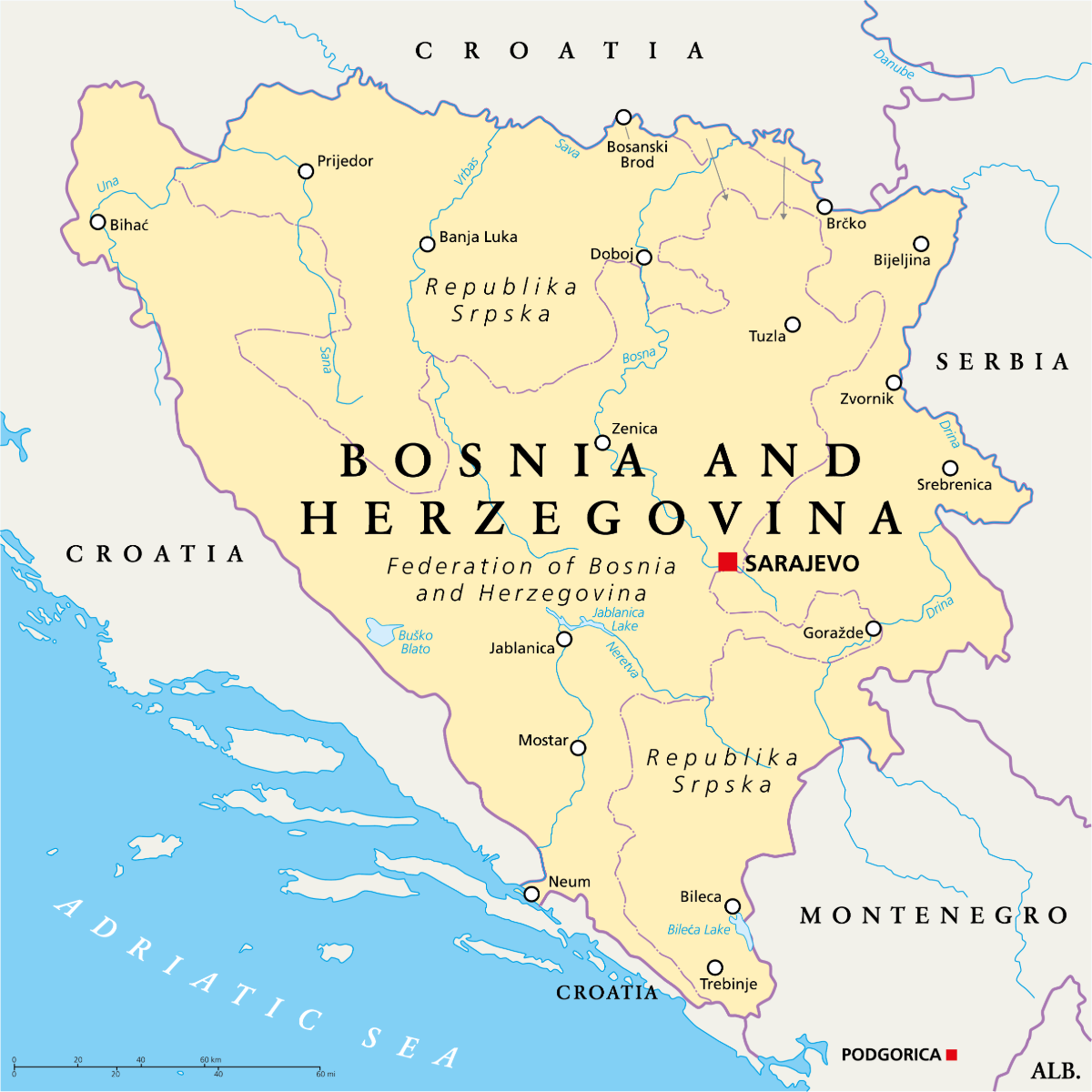
The protection of people’s individual rights will be found to be inadequate where minorities are confronted with a historical wrong or structural disadvantages. Whereas the legal entity in the case of individual legal protection is the individual member of the minority, measures relating to group rights are targeted at the group as the legal entity, although the distinction between individual and group protection is not always clearly defined. Positive measures in support of equal opportunities for minorities in administrative, economic, social or cultural fields are designed to establish material equality. Their legitimacy is derived from the de facto discrimination of a certain group without making the group itself the legal entity (→ Formal Equality). The concession of rigid quotas, which automatically benefit representatives of certain groups, on the other hand, is a question of group rights. In the first phase they are usually targeted at remediation of a historical wrong (allocation of resources, segregation), for example following an interethnic conflict. They have a peace-keeping function in that they tend to separate the groups involved in the conflict. In a second phase such quotas can be seen as confidence-building measures with regard to access to employment in the public services and can have an integrative function at the level of political participation (→ Participation). On the other hand, rigid quotas tend to have segregational effects in the long term. Rigid quotas are particularly problematical and lose their original justification where the structural disadvantages of the group concerned have already been compensated through the quota system. In such cases the objective must be to overcome the phase of segregation and institute a final phase of integration.
Ethnic proportionality as a generally accepted instrument of protection in South Tyrol

Photo: Adobe Stock/beeboys
Ethnic proportionality (“Proporz” in German) and the Declaration of Affiliation to a Linguistic Group are the backbones of minority protection in South Tyrol; they are the key to access to certain public offices and entitlement to certain rights of representation (→ Autonomies). Ethnic proportionality is practised in the public service (staffing), the allocation of budgetary funds, and the composition of provincial and regional government bodies. The purpose of ethnic proportionality is to mitigate an earlier wrong by defining entitlements in the above sectors for members of the German, Italian and Ladin linguistic groups in proportion to their relative numerical strengths according to the Declaration of Affiliation to a Linguistic Group (→ Uncounted).
As a vehicle for reversing the policy of italianisation practised under the Fascists, the 1946 Gruber–De Gasperi Agreement provided for “equal opportunities with regard to employment in the public services in order to achieve a satisfactory distribution of posts between the two ethnic groups”. Even after conclusion of the 2nd Autonomy Statute in the 1970s, however, proportional representation of the ethnic groups in public services, political office and the judiciary was still far from reality. In 1975, for example, of the 6000 positions in the public services subject to the proportionality rule only about 14 percent were held by representatives of the German and Ladin linguistic groups, although together they accounted for two thirds of the resident population of South Tyrol. Also with regard to the mandatory representation of the linguistic groups in the various elected public bodies and the allocation of budgetary funds proportionate to the relative strength of the linguistic groups, improvements had to wait until the 1976 Proportionality Decree was issued and the results became available from the 1981 census. Today the equitable distribution of government funds and proportionate representation has been largely achieved in the regional administration, the regional parliament, the local authorities and national government offices and comes with various supporting measures including mandatory bilingual or trilingual skills for public service employees (→ Speaking of Languages). Mandatory bilingualism does not discriminate against the Italian-speaking majority; like the basic principle of ethnic proportionality, it is merely designed to mitigate the de facto discrimination of the German and Ladin linguistic groups.
A question that is often discussed today is whether ethnic proportionality as an instrument of redress is still justified now that the numerical quotas have been reached. With vacancies in the public services filled with more than their share of members of the German and Ladin ethnic groups, ethnic proportionality had finally been achieved in most sectors by 2006. To that extent, this instrument of protection has lost its justification, but all linguistic groups continue to support it as a vehicle of ethnic peace and orderly coexistence. The rule of ethnic proportionality with its rigid quotas appears to remain in force as a decisive contribution to social peace and the equitable allocation of resources among the linguistic groups of South Tyrol. A certain degree of flexibility has been introduced, however, and will be needed in future to ensure that posts for which no suitable person has been found from one linguistic group can nevertheless be filled in the long term by an applicant from another. Given such flexibility on the one hand and fears of declining resources on the other, there is widespread support for the view that ethnic proportionality is likely to continue to be beneficial to peaceful coexistence in South Tyrol (→ Business and Economic Crises). Even though proportionality in South Tyrol may also have segregational effects, therefore, in practise it also plays an integrative role in combination with a relatively efficient public administration and other multilingual services and a general consensus on the subject of regional autonomy (→ Autonomies).
Bosnia-Herzegovina: The failure of a state in the face of ethnic proportionality

Photo: Adobe Stock/Peter Hermes Furian
Before the civil war, Bosnia and Herzegovina was the republic of Yugoslavia that best reflected the ethnic composition of the multinational state that collapsed in the 1990s. In the last census held there in 1991, the population was 44 percent Muslim (Bosniaks), 31 percent Serb, 17 percent Croat and 6 percent Yugoslav. As a result of forced displacement and ethnic cleansing during the war from 1992 to 1995, 250,000 people died or are still missing, and 1.2 million people became refugees in their own country (→ Zero tolerance). The homogenisation of the population caused by the war was formally confirmed in the Dayton Peace Accords signed in December 1995. The federal republic comprises two political entities: Republika Srpska (Serbian entity) with 51 percent of the territory, and the Federation of Bosnia and Herzegovina (Muslim-Croat entity) with 49 percent. With a total population of just over 4 million, the percentage ethnic mix is similar to the result of the 1991 census, though with a number of focal centres for the ethnic groups.
The centralist Republika Srpska and the Federation of Bosnia and Herzegovina with its ten cantons are the two constituent entities of the country and have considerable powers, whereas those of central government are limited. In addition, the rule of ethnic proportionality introduced for the Bosniaks, Serbs and Croats in the parliament, presidency, government and even the constitutional court has created a bloated and inefficient government apparatus with no fewer than thirteen prime ministers, 180 ministers and hundreds of deputies right down to the level of local government. The proportionality rules for the public services are also problematical as precise figures on which to base representation of the three ethnic groups are lacking (→ Uncounted). The judiciary comprises courts at the level of the state and the entities, and within the entities at the cantonal and local levels, i.e. the country has four parallel systems of jurisdiction. In the last few years, reforms have been initiated with the aim of strengthening the central powers and thus improving the efficiency of the system. Law enforcement, for example, is organised at the level of the two entities and also at the cantonal level. For effective policing, it would be necessary to create a central police organisation independent of the borders of the entities. However, the proposal only meets with the approval of the Bosniaks; the Serbs wish to maintain the powers of the entities, and the Croats prefer further regionalisation.
The organisational structure of the state is reflected in that of the legal system. According to the constitution of the state and that of the entities, the members of all three constitutive ethnicities are equal before the law in the territory of the whole country. Individuals and groups who are not part of the three ethnic groups of Bosniaks, Serbs and Croats do not benefit from this policy of non-discrimination, however. As a result of the proportionality system in the public services, decisive importance is attached to ethnic affiliation and membership in the political parties with their primarily ethnic structure. Only the Social Democrats and a fairly new small party called Radom za Boljitak have a non-ethnic structure, although even their membership and supporters are largely drawn from one of the three big ethnic groups. A constitutional reform is thus urgently needed to overcome the identification of territory with ethnicity and to guarantee equality before the law for all citizens, regardless of their ethnic affiliations – all the more so as, seventeen years after Dayton, one of the functions of ethnic proportionality, namely confidence building between the entities, has failed and has merely reinforced segregation between the groups. Rigid quotas, a paralysing administration and mono-ethnic political parties have failed to generate any signs of integration, so that the Serbs and Croats especially are lacking in loyalty and identification with the state.
Against this background, the European Court of Human Rights in Strasbourg (→ Judiciary) has found in the case Sejdic and Finci v. Bosnia and Herzegovina that the system as it was designed in Dayton is not sustainable. In the judgement delivered at the very end of 2009 the Court held that while ‘the time may still not be ripe for a political system which would be a simple reflection of majority rule’, other methods of power-sharing exist which do not automatically lead to the total exclusion of representatives of the other communities (that is those that are not recognised as ‘constitutive’ as is the case with the Bosniaks, Serbs and Croats). In view of the ‘possibility of alternative means of achieving the same end’, the exclusionary effects of the system are classified as discriminatory under the European Convention of Human Rights.
Quota systems in defence of disadvantaged ethnic groups and their limitations

Photo: Adobe Stock/MQ-Illustrations
Countless cases of racial discrimination heard by the Supreme Court in the USA have involved government support measures for groups of people who were disadvantaged in the past. The rulings of the court led to the introduction of quotas for minorities and other disadvantaged ethnic groups in US law and in some cases to the voluntary application of quotas relating to such matters as university admissions, appointments in the private and public sectors and also procurement (→ Formal Equality). Attempts to count minorities for the very purpose of allowing for positive discrimination measures like quotas may easily fail. This is due to the fact that, as a result of their experience with discrimination, members of minority groups are increasingly unwilling to answer questions about their origins and to publicly recognise their affiliation to a minority. In the case of recruitment for the police or prison services, preferential treatment in the public interest for certain ethnic groups including migrants in the hope that they will play a positive role with regard to integration in view of the ghetto situation in the cities and the above-average numbers of migrants among the US prison population can actually have the reverse effect if practised to excess. Such quotas can even reinforce existing discrimination and lead, not to equal opportunities but to the segregation of whole ethnic communities at the margins of public life. For that reason the US Supreme Court has spoken out against rigid quotas because, although they may be useful in defining targets, they risk being disproportionate and can be substituted by other means such as specific support measures. In general the latter can always be open to all, but at the same time they can be tailored to the needs of a certain group. Instead of rigid quotas, preference is accordingly to be given to flexible objectives, thereby avoiding disproportionate measures to compensate for disadvantages. The rulings of the European Court of Justice show certain parallels to the US situation; in Europe, too, the principle is a “yes” to quotas but only under very limited circumstances (→ Formal Equality).
Two take aways:
- Quotas or proportionality rules are measures designed to compensate minorities for disadvantageous treatment and to guarantee their survival. Rather than privileging a group vis-à-vis the majority population, they in fact merely place the two groups on an equal material footing. Once the desired effect has been achieved, however, rigid quotas are an infringement of the principle of equality.
- Unlike the failed policy of ethnic proportionality introduced at all levels in Bosnia Herzegovina, proportionality in South Tyrol has become an instrument of peaceful coexistence between the three linguistic groups. After over thirty years of implementation, the goal of ethnic proportionality has largely been achieved and continues to enjoy the support of a large majority in all linguistic groups as a key for the allocation of public goods.
